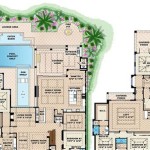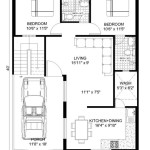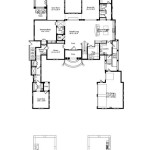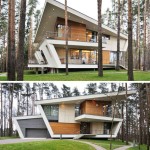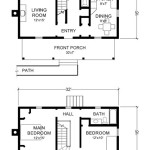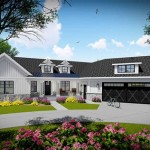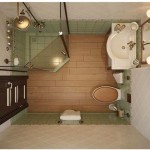3 Bedroom Apartment Floor Plans With Dimensions: A Comprehensive Guide
The 3-bedroom apartment configuration is a popular choice for families, roommates, or individuals requiring extra space for a home office, guest room, or hobby area. Understanding the various floor plan options available, along with their corresponding dimensions, is crucial for making informed decisions related to renting, purchasing, or even designing such a living space. This article aims to offer a detailed exploration of different 3-bedroom apartment layouts, incorporating dimensional information to assist in visualizing and planning the usage of each space.
The dimensions of a 3-bedroom apartment significantly influence the overall living experience. The size of each room, the hallway widths, and the placement of fixtures all contribute to the functionality and comfort of the apartment. Careful consideration of these elements before committing to a specific floor plan can prevent potential spatial constraints and ensure a harmonious living environment. This article will delve into common floor plan variations and their typical dimensions to provide a comprehensive resource for prospective tenants or buyers.
Key Point 1: Common 3-Bedroom Apartment Floor Plan Types
Several distinct floor plan types characterize 3-bedroom apartments, each offering varying advantages depending on the specific needs and preferences of the occupants. These types broadly include the linear layout, the side-by-side configuration, and the split-bedroom design. Each of these layouts affects the flow of the space and the degree of privacy afforded to each bedroom.
The linear layout, also sometimes referred to as a "railroad" style, typically features rooms arranged in a row along a central hallway. In a 3-bedroom linear apartment, the bedrooms are often situated alongside each other, often with the living area and kitchen at one end of the hallway and the entrance at the other. A common dimension found in this layout is a total length ranging from 50 to 70 feet, with a width varying between 20 and 30 feet. Individual bedroom sizes in this layout might average 10 feet by 12 feet, or 120 square feet per room. Although efficient in space utilization, this layout may lack natural light in the central rooms and offer less privacy between bedrooms.
The side-by-side configuration positions the bedrooms adjacent to each other on one side of the apartment, with the living area, dining area, and kitchen occupying the opposite side. This plan often features a more open concept living space. Dimensions are typically similar to the linear design, but the arrangement allows for larger common areas, potentially measuring 20 feet by 20 feet or more. Bedroom sizes might be slightly larger, around 12 feet by 14 feet (168 square feet). This layout tends to promote social interaction within the common areas while maintaining a dedicated bedroom zone.
The split-bedroom design separates the bedrooms, often placing the master bedroom on one side of the apartment and the remaining two bedrooms on the opposite side. This layout is often desired for heightened privacy. The common area, including the living room and kitchen, acts as a buffer between the bedroom zones. Master bedrooms in split-bedroom designs often range from 14 feet by 16 feet (224 square feet) or larger. The secondary bedrooms typically measure between 10 feet by 12 feet and 12 feet by 14 feet. This layout typically encompasses a larger overall footprint than the linear or side-by-side designs, often exceeding 1000 square feet.
Beyond these common configurations, variations exist, including corner units with unique angles and layouts that incorporate balconies or patios. These variations can lead to differences in room sizes and overall apartment dimensions. For instance, a corner unit might feature a larger living area with additional windows, while sacrificing some square footage in the bedrooms.
Key Point 2: Understanding Dimensional Considerations for Each Room
Each room within a 3-bedroom apartment has specific dimensional requirements to ensure functionality and comfortable living. These considerations extend beyond the basic square footage and encompass aspects such as ceiling height, doorway widths, and window placement.
The living room typically serves as the central gathering space within the apartment. Therefore, it warrants the largest square footage of all the common areas. A minimum size of 15 feet by 18 feet (270 square feet) is often considered desirable for comfortable seating arrangements and adequate circulation space. Larger living rooms, such as those found in split-bedroom designs, may measure 20 feet by 20 feet or more. Ceiling height is also an important factor, with heights of 8 feet or higher generally preferred to enhance the sense of spaciousness.
The kitchen dimensions should accommodate essential appliances such as a refrigerator, stove, oven, and dishwasher, along with ample counter space for food preparation and storage. An efficiency kitchen, often found in smaller apartments, might measure 8 feet by 10 feet (80 square feet), while a larger, more open kitchen could extend to 12 feet by 15 feet (180 square feet) or more. The layout of the kitchen, whether it’s a galley kitchen, an L-shaped kitchen, or a U-shaped kitchen, significantly impacts its functionality. Countertop depth typically measures around 24 inches, while walkways should be at least 36 inches wide to allow for easy movement.
Bedroom dimensions are crucial for accommodating a bed, nightstands, and a dresser, with adequate space for walking around the furniture. As previously mentioned, master bedrooms generally range from 14 feet by 16 feet (224 square feet) or larger. Secondary bedrooms typically measure between 10 feet by 12 feet (120 square feet) and 12 feet by 14 feet (168 square feet). It's essential to consider the placement of windows and closets when evaluating bedroom dimensions. Windows should provide sufficient natural light and ventilation, while closets should offer adequate storage space for clothing and personal items.
Bathrooms typically occupy a smaller footprint compared to other rooms. A standard full bathroom, including a toilet, sink, and a shower or bathtub, might measure 5 feet by 8 feet (40 square feet). Larger bathrooms may incorporate a separate shower and bathtub or a double vanity, increasing the overall dimensions. The placement of fixtures and the inclusion of storage cabinets are important considerations in bathroom design.
Hallways provide essential circulation space within the apartment. Minimum hallway widths should be at least 36 inches to allow for comfortable passage. Longer hallways may require slightly wider dimensions. The length of hallways can also affect the perceived spaciousness of the apartment. Shorter hallways tend to create a more compact and efficient layout, while longer hallways can contribute to a sense of grandeur.
Key Point 3: Impact of Dimensions on Functionality and Aesthetics
The dimensions of a 3-bedroom apartment significantly influence both its functionality and its aesthetic appeal. Well-proportioned rooms enhance the usability of the space, while thoughtful layouts can contribute to a more visually pleasing environment.
Sufficient square footage in the living room allows for flexible furniture arrangements and comfortable social gatherings. A larger living room can accommodate a variety of seating options, such as a sofa, loveseat, and armchairs, along with a coffee table and entertainment center. Conversely, a smaller living room may require more strategic furniture placement to avoid overcrowding. Dimensions impact the functionality of the living room by determining the number of people who can comfortably occupy the space.
Adequate kitchen dimensions facilitate efficient food preparation and storage. A larger kitchen can accommodate multiple cooks, while ample counter space provides room for preparing meals and displaying appliances. Insufficient counter space can lead to clutter and make cooking more challenging. Dimensions impact the functionality of the kitchen by influencing the ease of movement and the availability of workspace.
Bedroom dimensions impact the comfort and privacy of the occupants. Larger bedrooms allow for more spacious furniture arrangements and create a more relaxing environment. Smaller bedrooms may feel cramped and limit the options for furniture placement. Dimensions impact the functionality of the bedrooms by determining the amount of storage space available and the ease of movement within the room.
Bathroom dimensions influence the functionality and aesthetic appeal of the space. A larger bathroom can accommodate a separate shower and bathtub, creating a more luxurious and relaxing environment. Smaller bathrooms may feel cramped and lack adequate storage space. Dimensions impact the functionality of the bathroom by determining the ease of movement and the availability of space for personal hygiene activities.
Beyond individual room dimensions, the overall layout of the apartment contributes to its aesthetic appeal. Open floor plans, which seamlessly connect the living room, dining room, and kitchen, create a sense of spaciousness and promote social interaction. Conversely, more compartmentalized layouts provide greater privacy but may feel less open and inviting. The arrangement of rooms and the flow of traffic within the apartment significantly impact its overall aesthetic appeal.

3 Bedroom Ph 1 Bed Apartment Battlefield Park Apartments

3 Bedroom Bed Apartment Marion Park Apartments

Soho 3 Bedroom Floor Plan The District At Saxony Apartment Homes

Beautiful 3 Bedroom Floor Plan With Dimensions 9 Impression Apartment Plans House Simple

3 Bedroom Apartments Orchard Park

3 Bedroom Apartment Plan Examples

3 Bedroom Bath Flat Gb Bed Apartment District Lofts

3 Bedroom Bed Apartment Watermill Park Apartments

Free Editable Apartment Floor Plans Edrawmax

Solo 3 Bedroom Floor Plan Harmony Apartment Homes

